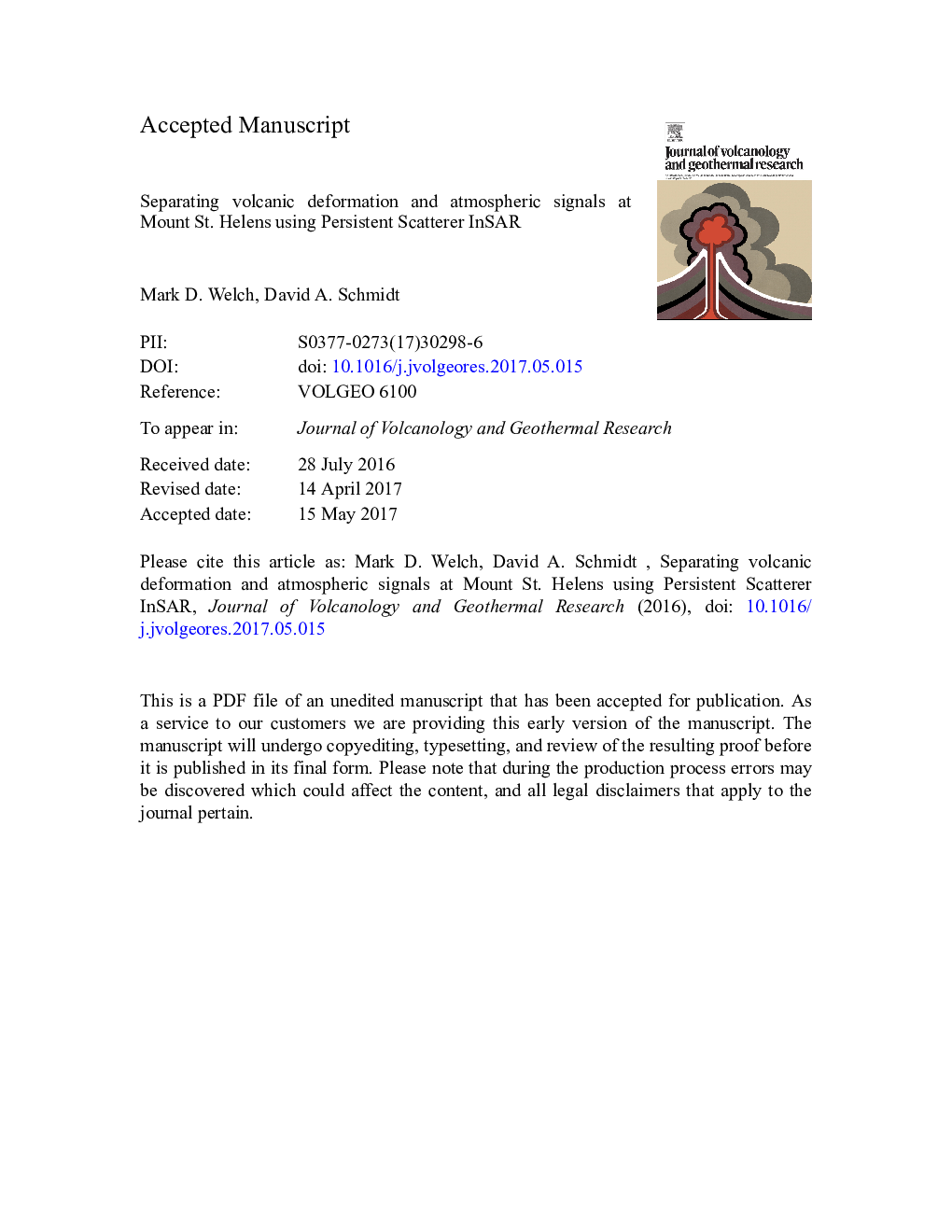| Article ID | Journal | Published Year | Pages | File Type |
|---|---|---|---|---|
| 5783718 | Journal of Volcanology and Geothermal Research | 2017 | 42 Pages |
Abstract
In this study, Persistent Scatterer InSAR, known to mitigate issues of decorrelation caused by environmental factors, is applied to four SAR data sets in an attempt to resolve localized sources of deformation on the volcano between 1995 and 2010. Many interferograms are strongly influenced by phase delay from atmospheric water vapor and require correction, evidenced by a correlation between phase and topography. To assess the bias imposed by the atmosphere, we perform sensitivity tests on a suite of atmospheric correction techniques, including several that rely on the correlation of phase delay to elevation, and explore approaches that directly estimate phase delay using the ERA-Interim and NARR climate reanalysis data sets. We find that different correction methods produce velocities on the edifice of Mount St. Helens that differ by up to 1Â cm/yr due to variability in how atmospheric artifacts are treated in individual interferograms. Additionally, simple phase-based techniques run the risk of minimizing any surface deformation signals that may themselves be correlated with elevation. The atmospherically corrected PS InSAR results for data sets overlapping in time are inconsistent with one another, and do not provide conclusive evidence for any pre-eruptive deformation at a broad scale or localized to the crater or edifice leading up to the 2004 eruption. However, we cannot rule out the possibility of deformation less than ~Â 1Â cm/yr, or discern whether deformation rates increased in the months preceding the eruption. The results do significantly improve the spatial density of observations and our ability to resolve or rule out models for a potential deformation source for the pre-eruptive period.
Related Topics
Physical Sciences and Engineering
Earth and Planetary Sciences
Geochemistry and Petrology
Authors
Mark D. Welch, David A. Schmidt,
